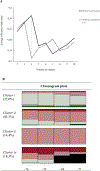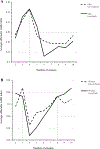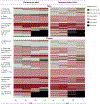Lifetime socioeconomic determinants of health trajectories among older adults
- PMID: 34733129
- PMCID: PMC8562571
- DOI: 10.1016/j.alcr.2021.100415
Lifetime socioeconomic determinants of health trajectories among older adults
Abstract
Drawing on life course theory and research, we explored how socioeconomic circumstances during childhood and adulthood shape self-reported health trajectories among older Mexican adults. We used data from the Mexican Health and Aging Study panel survey (2001-2015) and used sequence analysis to estimate types of self-reported health trajectories in older adulthood. We then explored the association between those health trajectories and socioeconomic determinants at different life stages, including education, occupation, employment, economic status, parental education, and adverse living conditions and illnesses during childhood. Our contributions are threefold. First, we identified four types of health trajectories for men and eight for women, representing a more nuanced longitudinal health status profile than previously shown. Second, we found that childhood and adult socioeconomic circumstances influence self-reported health trajectories at older age. Third, our results suggest there is no simple monotonic relationship between life course circumstances and self-reported health trajectories.
Keywords: Health trajectories; Mexico; aging; life course; socioeconomic position; vulnerability.
Figures





References
-
- Aisenbrey S, & Fasang AE (2010). New life for old ideas: The” second wave” of sequence analysis bringing the” course” back into the life course. Sociological Methods & Research, 38, 420–462.
-
- Alderman H, & King EM (1998). Gender differences in parental investment in education. Structural Change and Economic Dynamics, 9, 453–468.
-
- Anson O, Paran E, Neumann L, & Chernichovsky D (1993). Gender differences in health perceptions and their predictors. Social Science & Medicine, 36, 419–427. - PubMed
Publication types
MeSH terms
Grants and funding
LinkOut - more resources
Full Text Sources
